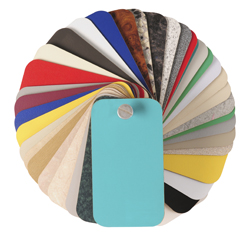What do you think of when you hear the term “bathroom partitions”? Most of you would probably answer, “Just metal panels placed between toilets,” right?
 Well, bathroom partitions are actually so much more than that. They are not just generic panels one could purchase on a whim and throw into a public restroom. Instead, bathroom partitions are carefully chosen and crafted to fit the environment where they are to be installed. Key factors such as humidity, price, durability, and aesthetics are put into consideration before choosing the best bathroom partition material for each restroom.
Well, bathroom partitions are actually so much more than that. They are not just generic panels one could purchase on a whim and throw into a public restroom. Instead, bathroom partitions are carefully chosen and crafted to fit the environment where they are to be installed. Key factors such as humidity, price, durability, and aesthetics are put into consideration before choosing the best bathroom partition material for each restroom.
We are going to explore four different types of materials, and then delineate the advantages and disadvantages of each one.
Powder coated steel Partitions
Overview: The most common and economical option is the powder coated steel. This material is made up of a panel of honeycomb cardboard sandwiched by a thick sheet of metal covered in powder coat finish. The process involves applying colored powder to the steel and running it through an oven, where the powder is baked on the steel.
Affordability: Powder coated steel is the most affordable option.
Durability: There is usually a one-year warranty that comes with the purchase of powder coated steel bathroom partitions.
Advantages: Powder coated steel is economical, and it has a nice high-quality finish.
Disadvantages: The only minor disadvantage is that powder coated steel partitions don’t come in a variety of colors if you are looking for several different styles to choose from.
Plastic Laminate Partitions
Overview: Plastic laminate partitions are created with a thin layer of laminate adhered to a particle board substrate. The process involves taking a thin sheet of laminate and applying it to the sheet of metal.
Affordability: Laminated steel usually costs about 5% higher than powder coated steel.
Durability: Just like powder coated steel, laminated steel normally comes with a one-year warranty.
Advantages: Laminated steel is highly customizable. There are hundreds of colors to choose from. Some options include wood grains, granite, marble, and solid patterns.
Disadvantages: You cannot use laminated steel in humid or wet areas. Water and humidity do not mix well with laminate. The only place you couldn’t use this is in a shower area.
Solid plastic Partitions
Overview: Solid plastic partitions are comprised of solid plastic. They’re basically solid panels of polymer that are one inch thick.
Affordability: Solid plastic partitions normally cost 50% – 60% higher than powder coated steel partitions.
Durability: Solid plastic is popular with schools, because solid plastic lasts a long time and it can take quite a beating from schoolchildren. Also, it comes with a 15-year warranty, so it may last a lifetime.
Advantages: You can use solid plastic partitions in any kind of environment – wet, dry, cold, or hot – because they’re highly durable.
Disadvantages: Solid plastic partitions are pricey, but if you put its durability and great warranty options, it is well worth the price tag.
Stainless steel Partitions
Overview: Stainless steel is an excellent material to choose for a high end environment. It comes in several different patterns, such as a textured pattern or a diamond pattern.
Affordability: Stainless steel bathroom partitions are double the cost of powder coated steel partitions.
Durability: Because they are rigid and waterproof, stainless steel bathroom partitions can last a very long time.
Advantages: Stainless steel bathroom partitions look luxurious, so they are generally used in high-end environments. They are also designed to suit any type of environment.
Disadvantages: There really aren’t any disadvantages to Stainless Steel Partitions. If you have the budget and want a high end look, then stainless steels is a great choice.
To carefully consider each of the four key factors – environment, price, durability, and aesthetics – before choosing the perfect bathroom partitions for your bathroom.








